Cuba travel: How much things cost, and how to do it on your own
Cuba is unlike any country on Earth. Very few citizens have left the island, Cubans live in a place overtly controlled by a Communist government and, thanks to the fact that up until a few years ago all businesses were government run, there is no middle nor wealthy class.
But that’s not to say it isn’t an interesting place to visit. Far from it. The culture is rich and vibrant, the locals dance salsa in the street in the evenings and the people are always smiling.
The landscapes of Cuba shouldn’t be overlooked either. From the pristine white beaches of Varadero to the prehistoric-like region of Vinales, Cuba is a country that’s begging to be explored.
And you’d better get there quick if you want to see Cuba how it is today. As soon as Castro dies, the country is going to change. Once Coca-Cola and the rest of capitalism enters the country, it’ll be just like any other Western place. Travel there while it’s unique and still a different world.
Getting to Cuba independently
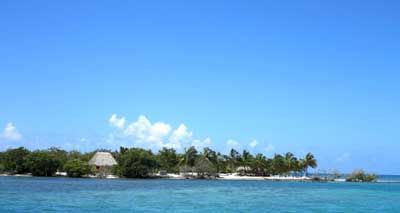
If you’re American (and you choose to ignore the travel ban), the best way to get to Cuba through independent travel is via Cancun, Mexico. It’s about an hour flight between Cancun and Havana and you can get tickets for as low as US$150 one way.
However, on arrival, ask the customs not to stamp your passport so that you can avoid unwanted questions by US customs upon your return.
Currency in Cuba
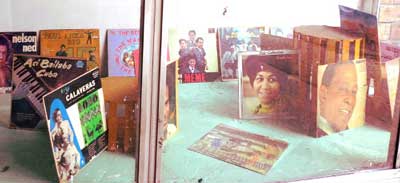
It can be a little complicated to get your hands on Cuban money, as unlike other countries you can’t get the currency before you get there, and instead you have to change your money once you arrive in the airport.
Don’t take US Dollars to exchange, as they charge you a 10% conversion rate. Australian currency isn’t accepted either. Canadian dollars and Euros are going to be your best bet.
Once you’re in Cuba, make sure you don’t change any money on the street, and that you go to a reputable currency shop. Otherwise you run the risk of being scammed. Remember that one CUC = one US dollar, and make sure you check the currency is CUCs and not the local Pesos when you purchase it, as you’ll end up with significantly less cash.
Keep in mind that Visa and Mastercard won’t be accepted anywhere except for in the resorts and hotels, and for a large fee. It’s also difficult to withdraw money from banks. There are only a handful of banks, and they’re all in the main cities.
We ran out of cash while we were there and only had Mastercard on us. The very few ATMs that are scattered around the country only take Visa and so we had to go to a bank to withdraw our money. This involved queuing and then paying a US$25 withdrawal fee.
It’s better to carry all your cash on you as you move about the country. I know this probably goes against everything you know about travelling safely, but it’s the most convenient way to get around.
And contrary to what you might believe after watching American news channels, Cuba is an extremely safe country with very little petty crime. In fact, I felt much safer there than all the countries we’ve travelled to in South and Central America.
Locals are harshly punished if they rob tourists, and many live in fear of the state-controlled police, so it’s highly unlikely you’ll be the victim of theft.
How to travel around Cuba on your own
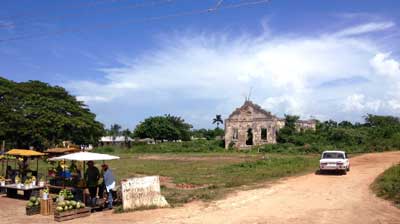
Keep in mind that your luggage will be weighed before you board, and the maximum weight you can take with you is 20kg.
Another way to get around is via taxi. When we were offered a lift from Vinales to Havana for $25 each, we thought this was a bargain as it was the same price as the bus.
However, we soon realised why this was such a ‘deal’ – we were riding in a minivan with eight other tourists. The driver stopped twice to let locals in, dropping them off a short while later. Our driver also visited his friend at his house for a chat along the way.
If you have the patience, get a taxi. Sometimes you might be pleasantly surprised when an old school car from the 1940s with a brand new Mercedes-Benz engine under the hood picks you up. (And even more pleasantly surprised when it has air-conditioning.)
But keep in mind that it won’t be a private taxi and that your journey could have a few detours along the way.
All the city centres are walkable, aside from Havana. To get around Havana, you can hitch a ride in a ‘Colectivo’ which zig-zags in and out of the streets, dropping locals off and picking them up as it goes. It’s a cheap way to get around the city and will give you an insight into everyday life.
How to get accommodation in Cuba
Dave and I stayed in resort accommodation in Varadero and the rest of our time in Cuba we stayed in Casa Particulars.
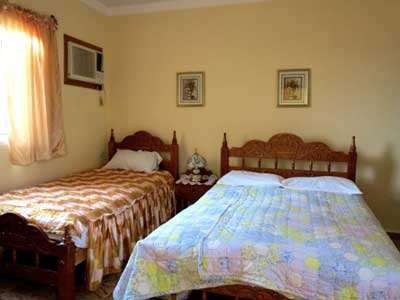
In saying that, the resorts are inexpensive places to stay. Dave and I paid US$100 per night for the two of us at BeLive Hotels and this included three meals a day and unlimited alcohol and soft drinks. The resort had a gym, two swimming pools and was situated right on a beautiful beach.
However, Casa Particulars are the way to go if you want to truly experience Cuban culture. A Casa Particular means ‘private house’ and is when Cubans invite you into their home and give you a room to stay for a fee. Think of it as the original Airbnb!
Expect to pay between US$15 and US$40 per person, per night.
Often these Casa Particulars will offer meals too – at the very least breakfast and sometimes three meals a day. The accommodation is often better than what you’ll find in the mid-range hotels and the home cooked food is significantly better than state-run restaurants.
We ate lobster at one of the Casa Particulars we stayed in for just US$15 – for a whole lobster!
However, the food in Cuba leaves a lot to be desired, as Cubans often struggle to get their hands on imported foods and spices. Also, their cuisine hasn’t had any international influences for more than three decades so it’s easy to see how un-exciting it’s become.
To get a Casa Particular, you can browse online at websites like My Casa Particular and book before you go. Or you can simply turn up and hope to find one. As you get off the bus or out of a taxi, expect to be overwhelmed by touts shouting for you to come stay with their friend or ‘brother’.
All of these touts get a cut from your accommodation, meaning you’ll pay more than if you seek out a Casa Particular beforehand and then make your own way there when you arrive in the town.
If you get a taxi to take you to your Casa Particular, the driver will probably try and persuade you to stay somewhere else, and he’ll get a cut from sending you there. Be firm and tell him that no, you’d rather go where you’d planned.
If you’re a backpacker and looking for a hostel to spend the night, you’re going to be out of luck in Cuba, unless you’re in Havana. There’s a few hostels in the Cuban capital, like Cuba Backpackers and Rolando’s Backpacker, but otherwise Cuba is practically hostel-free.
If you are travelling solo, I would recommend starting your time in Cuba in Havana, making some travel buddies in the hostels and then travelling the rest of the country with your new-found friends.
How to avoid getting ripped off in Cuba
Because the state salary is as low as US$250 a month, it’s easy to see why Cubans like to take advantage of wealthier tourists who visit their country.

Another way to get easily taken for a ride in Cuba is to book a tour through your Casa Particular or someone else you meet. The best way to book a day tour, such as going out to an island or a horseback riding adventure, is to go directly to one of the state-run tourism offices. Remember that if you book through someone else, they will always be taking a cut of your tour, making it more expensive for you.
Be careful with prices at your Casa Particular too. Make sure you ask upfront about how much a room costs per night, how much each meal you eat is, and how much it is to do your laundry. We got slammed with a US$20 fee for 3kgs of washing, simply because we didn’t ask in advance.
In saying all this, remember to tip Cubans for their good service. Because their wages are so low, often local families need these tips to survive day-to-day living, so be generous. Chances are, if you’ve made it all the way to Cuba, you’re a lot wealthier than they are.
The modern world vs life in Cuba
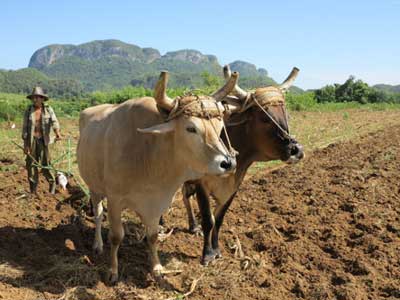
You can also go to state-run communication agencies to use their computers, but you will need to queue (sometimes for more than an hour) and the computers are dated.
Sites like YouTube and access to your online bank (if you bank with a USA company) will be blocked. So too is PayPal.
However, after two weeks in Cuba we’d realised how lovely it was to have a digital detox. Not checking your iPhone every ten minutes is refreshing and being undistracted from technology for so long was an enjoyable change.
But it’s not just the internet that’ll make you feel as though you’re living in the past. The stores in Cuba have very little on their shelves and products we take for granted in Western supermarkets, such as razors and peanut butter, cannot be found in Cuba. Because of the USA embargo on its products going to the island, even basic pharmaceuticals like ibuprofen are non-existent.
Dave and I had read about this in advance, and brought hard-to-come by coloured pencils, toothpaste, toothbrushes and medicine to give away to the people we met. They were extremely grateful, as something so simple for us was a rare treat for them.
As one of the few countries in the world that’s still somewhat ‘disconnected’ from the online world, not to mention politically unattached to many countries around it, there’s no doubt Cuba can be a challenging place for independent travel.
But it’s also a very rewarding place to visit and although we wouldn’t want to live in a place that’s stuck in the 1950s, we definitely want to return and explore this unique island once more.
By Carmen-Allan Petale
Carmen is one half of the couple behind Double-Barrelled Travel, a travel blog focused on vlogging. Carmen married Dave two and a half years ago, and they quit their journalism careers in mid-2013 for a life on the road.

Some other canadians suggested I bring notebooks, pencils, pens, and baseballs. I brought them and nobody gave a shit and suggested that clothes, toys, electronics, and shoes would be a better choice.